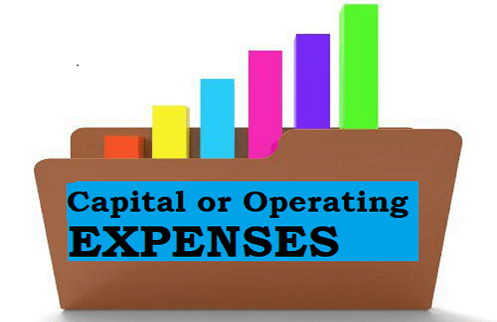
Taxes – the word alone is enough to make anyone cringe or sigh. Whether you’re a recent college grad starting your first job or a seasoned professional planning for retirement, taxes affect us all. Recently, there’s been a buzz around tax-related news that’s not just for number crunchers but for everyone who cares about their hard-earned dollars. Let’s take a closer look.

In the wake of marijuana legalization in several states, the accounting landscape is undergoing significant shifts. The burgeoning cannabis industry is grappling with unique financial challenges, prompting regulators and accounting professionals to adapt swiftly. Let’s explore more on these developments.

The financial health of your business is paramount. But navigating the complexities of accounting and taxes can feel overwhelming. This is where accounting solutions come in, offering a comprehensive approach to managing your finances with confidence.
As a credentialed tax accountant, I’ve witnessed firsthand the transformative power of robust accounting practices. Let’s delve into the world of accounting solutions and explore how they can benefit your business.

Real estate accounting involves managing the finances of your property investments effectively. Here are some key points to help you grasp the basics: Let’s learn more now.

LLCs are flow-through entities by default meaning the LLC itself doesn’t pay taxes and the profits (or losses) flow through to the owners. This avoids double taxation which occurs when a corporation pays taxes on its profits and then the shareholders pay taxes on dividends they receive from the corporation. Let’s take a closer look at taxation of LLCs.

Absolutely! A well-prepared and clean set of financial statements is a game-changer when it comes to tax season for any business. A clean set of books equal stress-free tax season. Here’s why: Clean financials minimize the risk of mistakes and inconsistencies, which can lead to delays, penalties, or even audits. This gives you peace of mind knowing your return is accurate and compliant. Let’s learn more about it now.

Properly classifying workers as employees or independent contractors is crucial for both businesses and individuals, with significant implications for taxes, rights, and responsibilities. Let’s delve further into the key aspects of why this is so important.

As an S corporation owner, you wear many hats. You’re the CEO, the marketing team, the janitor – and, most importantly, your own chief financial officer. That means when it comes to retirement planning, you’ve got some decisions to make. Two popular options are the solo 401(k) and the SEP-IRA, each offering unique advantages and tax implications. Let’s dive into the details:

Navigating the financial intricacies of real estate investments, particularly rental properties, can be a complex endeavor. Among the key considerations for landlords are operating expenses and capital expenses, which play a significant role in determining the overall profitability of a rental property. Pre-rental expenses complicate matters even further from an accounting and taxes perspective. Let’s take a closer look.

Cost of Goods Sold (COGS) and Cost of Goods Manufactured (COGM) are two important accounting concepts for businesses that produce or sell physical goods. While they are related, there is a key difference between the two. Let’s learn more now.

Cost of Goods Sold (COGS) is an important accounting concept for businesses that sell physical goods. It represents the direct costs associated with producing or acquiring the goods that were sold during a given period. COGS is deducted from revenue to calculate gross profit, which is a key measure of profitability.

In-kind donations are non-cash gifts made to nonprofit organizations. They can include goods, services, time, and expertise. Individuals, corporations, and businesses can all make in-kind donations.
For donors, in-kind donations can be a great way to support the nonprofits they care about, even if they don’t have the financial resources to make a cash donation. In-kind donations can also be a more tangible way to give, as donors can see the direct impact of their donation on the nonprofit’s work. Let’s take a look further.

Nonprofit and governmental organizations often receive donations and grants that are restricted to being used for specific purposes. These restricted funds can be a valuable source of funding for organizations, but it is important to understand the different types of restrictions and how to manage them properly. Learn more with Sanz Virtual Enterprise.

Fundraising events are a great way for nonprofit organizations to raise money and awareness for their cause. However, planning and executing a successful event can be a challenge. Here are some best practices for hosting and accounting for fundraising events

Nonprofit organizations are exempt from paying federal income tax, but they are still required to file annual tax returns with the Internal Revenue Service (IRS). The specific tax form that a nonprofit organization is required to file depends on its size and type of activities. Let’s talk about which forms to file, implications related to filing requirements, and more.

501(c)(3) is a section of the Internal Revenue Code that provides tax-exempt status to certain nonprofit organizations. These organizations must be organized and operated exclusively for religious, charitable, scientific, testing for public safety, literary, educational, or other specified purposes.

Growing a 501c3 organization can be challenging, but it is also incredibly rewarding. There are many different ways to grow your organization, and the best approach will vary depending on your specific mission, programs, and resources. However, there are a few general tips that can help any 501c3 organization achieve its growth goals.

Owner’s or members’ draw is a common way for business owners to take money out of their businesses for personal use. However, it is important to note that these payments are not deductible business expenses.

In response to the COVID-19 global pandemic the US federal government began providing PPP (Paycheck Protection Program) loans as an economic relief for US small businesses. One of the main objectives of the PPP loan is for it to cover payroll wages and self-employment income.
Let’s talk about the PPP loan as it relates to payroll wages specifically. To begin with, the loan amount is calculated at 2.5 multiplied by average monthly wages. So for instance, let’s say a business owner claims…

In one of our previous blogs which can be found here, #formal-financial-audits-reviews-and-bases-of-accounting-in-the-everyday-small-business-industry, we spoke about “What is a formal financial audit?” and “What is a formal financial review?” So, let’s pick up from where we left off and look at a few examples highlighting the purposes of audited and reviewed financial statements.
The examples being discussed today are in regards to Banks, Tax Purposes, and Board of Directors as follows:

Let’s talk formal financial audits, financial reviews, and bases of accounting in the everyday small business world:
What is a formal financial audit? What is a formal financial review? What is meant by “basis of accounting”?
Let’s take a closer look here.

One of the most costly penalties is the Failure to file penalty but it is the most evitable penalty also. The failure to file penalty is assessed whenever taxpayers fail to file their taxes by the due date or extension deadline; accruing at 5% per month. In a short five month period, the failure to file penalty easily peaks at a whopping 25% of taxes owed. This is why I always adjure taxpayers to file their taxes on time even if they may have a tax balance due. If a tax balance is due today, it will be due tomorrow, or whenever that tax return is eventually filed. Now, let’s take a look at a few additional penalties and associated interest that are now compounded on top of an unnecessary failure to file penalty.

With the new Tax Cuts and Jobs Act, almost every taxpayer will be affected by the new tax laws, TCJA, which take effect beginning tax year 2018. First off, under the new law, the individual tax brackets are set at 10%, 12%, 22%, 24%, 32%, 35%, and 37%. It is important to check and compare your tax bracket from last tax year to this tax year for tax planning purposes. For example, tax rate comparisons are necessary to determine if you should switch from owning a pass through business entity to a non-pass through business entity.

Mortgages refinance with a Bank or Mortgage Company can be a great tool to saving yourself some money. We get these offers in the mail, by phone, by email, on social media, you name it. But, is a lower refinance interest rate with the mortgage company always worth the deal?
Let’s take a closer look.

Learn about 20 easy ways to save on your taxes. It’s free. Click on the read more button to view now.

In business, working capital is defined as current assets minus current liabilities; this calculation demonstrates whether or not a company has enough cash or liquid assets to pay its current bills or obligations (bills that have to be paid in less than one year). At the individual level the concept is the same.
Let’s look at a few ways your credit could be hampering your financial goals.

With a strong background in Finance as well, I have written an e-book highlighting useful basic concepts about Money and Finance. E-book now available for download.
